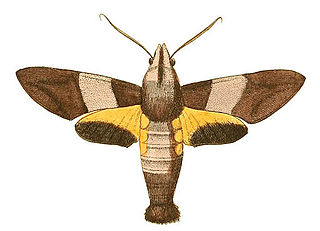
Macroglossum passalus, the black-based hummingbird hawkmoth, is a moth of the family Sphingidae described by Dru Drury in 1773. It is known from Sri Lanka, India, Thailand, south-eastern China, Taiwan, southern Japan, Indonesia and the Philippines.

Ceretes thais is a moth in the Castniidae family. It is found in Brazil. Superficially it looks very like a butterfly, and was originally placed by Dru Drury in the "Papilio " group which mostly corresponds with modern Nymphalidae.

Archodontes is a genus of root-boring beetles in the family Cerambycidae. It is monotypic, being represented by the single species Archodontes melanopus. It is endemic to Central America and the south-eastern United States, and bores the roots of oaks and other hardwoods.

Euphaedra perseis, the Perseis mimic forester, is a butterfly in the family Nymphalidae. It is found in Guinea (Conakry), Sierra Leone, Liberia, Ivory Coast and western Ghana. It was first described by Dru Drury in 1773.

Neoclytus longipes is a species of beetle in the family Cerambycidae. It was described by Dru Drury in 1773.
Eburia quadrimaculata is a species of beetle in the family Cerambycidae.

Elaphidion irroratum is a species of beetle in the family Cerambycidae. It was described by Carl Linnaeus in his 1767 12th edition of Systema Naturae.
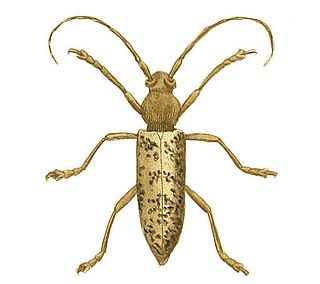
Enaphalodes atomarius is a species of beetle in the family Cerambycidae. It was described by Dru Drury in 1773 from New York City.

Steirastoma pustulata is a species of beetle in the family Cerambycidae. It was described by Dru Drury in 1773 from Jamaica.
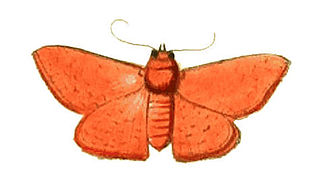
Banisia myrtaea is a species of moth of the family Thyrididae. It was first described by Dru Drury in 1773 from Madras.
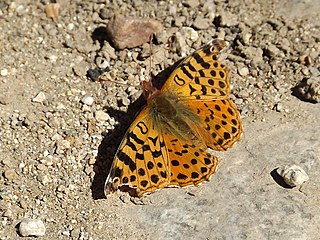
Yramea cytheris is a species of butterfly in the family Nymphalidae. It was first described by Dru Drury in 1773 from the Falkland Islands. In some systems it is included in genus Issoria.

Greta diaphanus, the Antillean clearwing, is a species of clearwing (ithomiine) butterflies, named by Dru Drury in 1773.

Antheua servula is a species of moth of the family Notodontidae. It was first described by Dru Drury in 1773 from Madras. It is also found in other parts of India, Sri Lanka and on Sumatra.

Lucinia cadma is a species of brush-footed butterfly. It was first described by Dru Drury in 1773 from Jamaica. Distinct subspecies are found on other Caribbean islands.

Prosopocera bipunctata is a species of flat-faced longhorn beetles in the subfamily Lamiinae. It was first described by Dru Drury in 1773, from Sierra Leone.

Polyrhaphis spinosa is a species of longhorn beetles of the subfamily Lamiinae. It was first described by Dru Drury in 1773.

Gaeana maculata is the type species of cicadas in the genus Gaeana. It was first described by Dru Drury in 1773, from China.
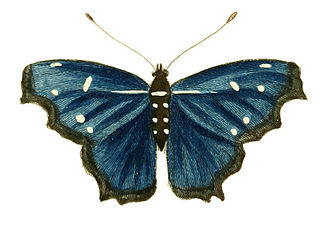
Myscelia orsis is a species of nymphalid butterflies native to Brazil. It was first described by Dru Drury in 1782.

Lobobunaea phaedusa is a species of very large moths in the family Saturniidae. It is found in much of sub-saharan Africa, where its host plants include African custard-apple, crown-berry, and Aframomum spp.

Pierella nereis is a butterfly species from the subfamily Satyrinae in the family Nymphalidae. It was first described by Dru Drury in 1782 from Brazil.


















